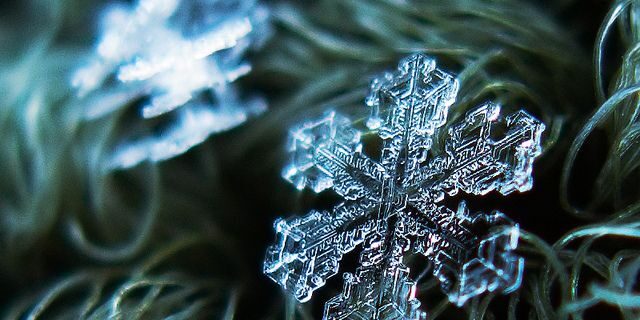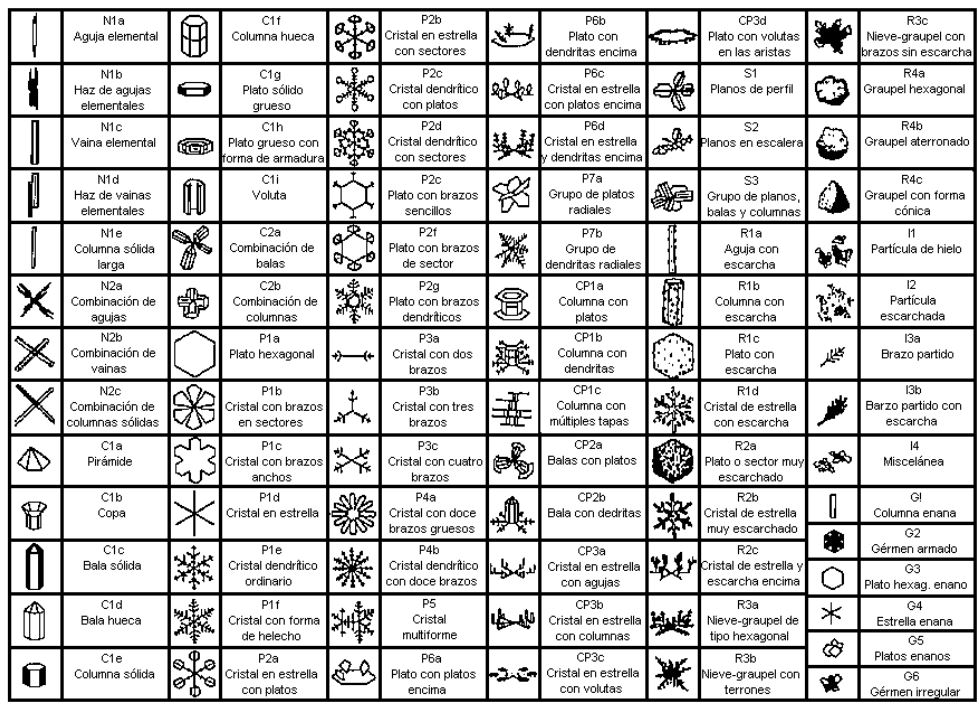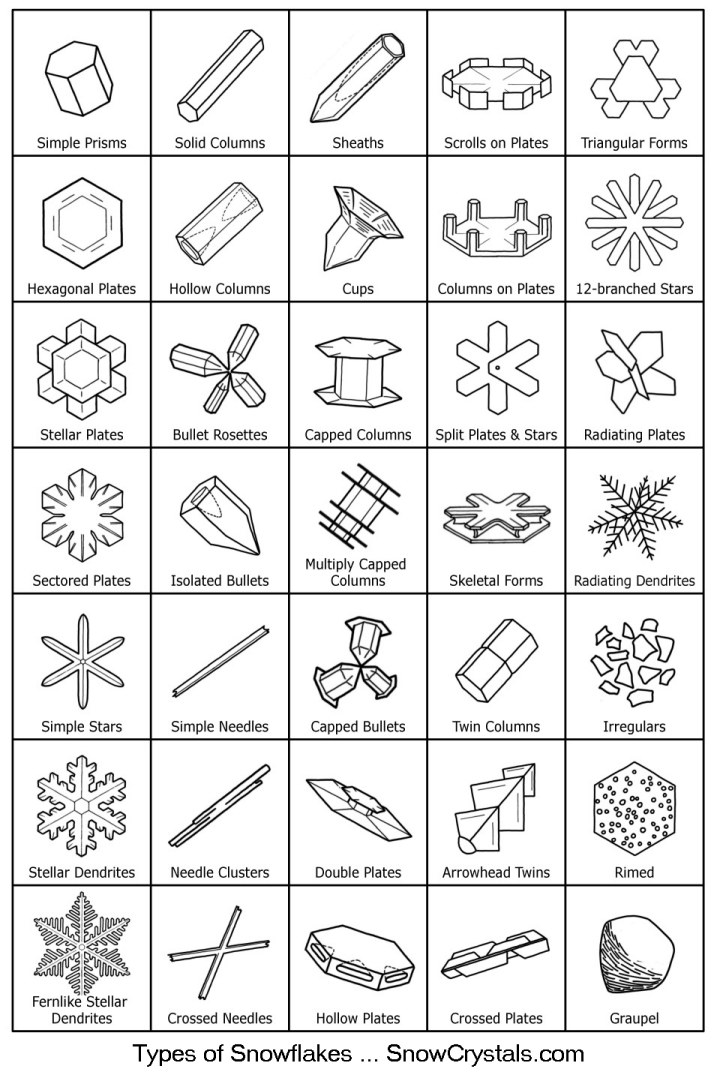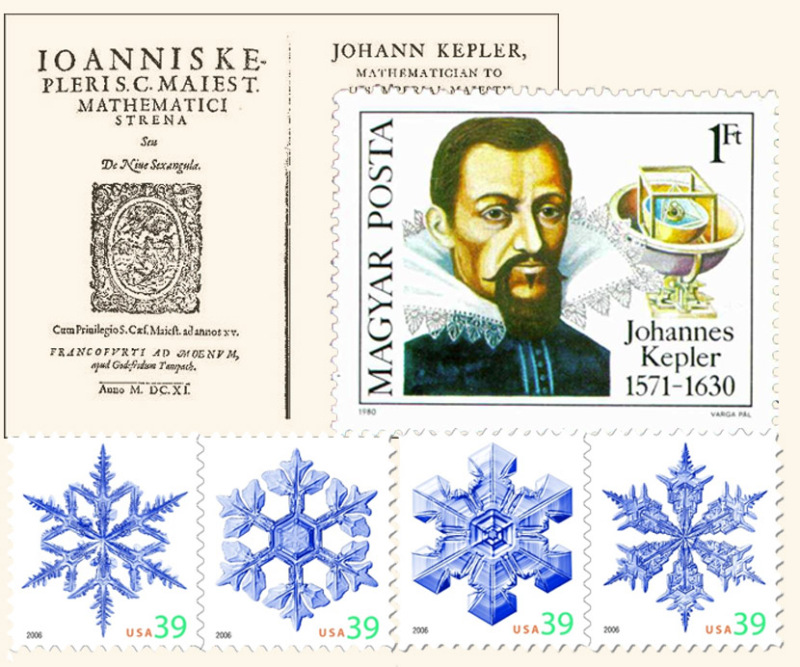Did you know why snoflakes have 6 branches?
The first study of snow geometry is attributed in 1611 to Johannes Kepler, with the publication of the first description of the hexagonal geometry of the snowflakes in a study entitled “De nive sexangula” as a Christmas gift to Rudolph II Of Habsburg
Of Habsburg The geometry of the snowflakes is determined by the temperature and humidity to which they are formed. As Kepler describes in his study, they normally take a geometric shape based on the hexagon, although depending on the conditions of humidity and temperature, they can also form snowflakes whose geometry is based on the triangle or the dodecagon.
As Kepler describes in his study, they normally take a geometric shape based on the hexagon, although depending on the conditions of humidity and temperature, they can also form snowflakes whose geometry is based on the triangle or the dodecagon. Wilson Alwyn Bentley tried in 1885 to identify identical snowflakes photographing thousands of them with a microscope, finding the great variety of geometries known today, but could not find two that were identical, so I put the theory that they can not There are two identical snowflakes. If we take into account that in each snowflake there are about 10 ^ 18 molecules of water, which are structured differently depending on the temperature, humidity and height of the atmosphere to which they are formed, was a feasible statement.
In 1988 a team in Wisconsin showed that two snowflakes can be totally identical if the environment in which they form is sufficiently similar.
In the photos you can see all the classified geometries that can acquire the snowflake.
LINK: https://establopegaso.wordpress.com/2014/12/19/el-sueno-geometrico-de-kepler/










